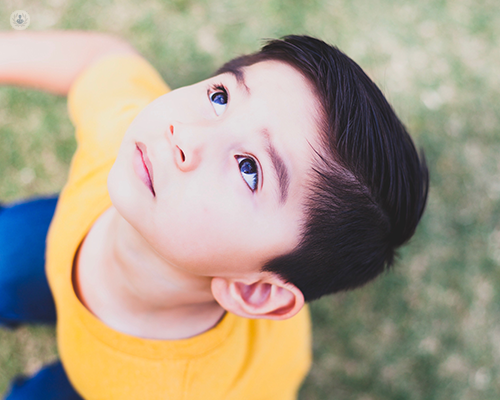Autism assessments for children aged 3-15: A comprehensive guide
Escrito por:Autism spectrum disorder (ASD) is a developmental condition that impacts communication, behaviour, and social interactions. Early diagnosis and intervention are crucial for improving the quality of life for children with autism.
Dr Kanika Grover, renowned consultant paediatrician with special interest in developmental paediatrics, offers an expert insight into autism assessments for children aged 3-15, addressing key concerns and guiding parents through the process.

What are the signs that indicate that my child might need an autism assessment?
Recognising the early signs of autism is crucial for timely assessment and intervention. Some common signs include:
Social interaction difficulties
- lack of eye contact
- difficulty understanding social cues
- struggling to make friends
Communication challenges
- delayed speech and language skills
- repetitive use of language or unusual speech patterns
- difficulty starting or maintaining conversations
Behavioural patterns
- repetitive behaviours (e.g. hand-flapping, rocking)
- strong preference for routines and resistance to change
- uncommon interests or an intense fixation on particular topics
- over- or under-sensitivity to sensory input (e.g. light, sound, textures)
What is the process for getting my child assessed for autism?
The first step in the assessment process is to consult with a healthcare professional, such as a paediatrician, who has experience with developmental disorders. During the initial consultation, the paediatrician will review the child's developmental history and address any concerns.
If autism is suspected, they will refer the child to a specialist, such as a developmental paediatrician, who is qualified to conduct a comprehensive assessment.
What does an autism assessment involve?
Autism assessments are multifaceted and involve several steps to ensure an accurate diagnosis.
The assessment begins with a thorough review of the child’s developmental history. This involves detailed questions about the child’s early development, communication skills, social interactions, and behaviour patterns.
Parents and teachers are often asked to complete standardised questionnaires that provide additional insights into the child’s behaviour across different settings.
The specialist will then engage with the child in various activities to observe their communication, social interaction, play, and behaviour. This direct observation is crucial for identifying specific signs of autism.
Additionally, several standardised tools will also be used. These include:
- Autism diagnostic observation schedule (ADOS): A structured assessment that involves a series of activities designed to elicit behaviours associated with autism.
- Autism diagnostic interview-revised (ADI-R): A comprehensive interview conducted with the parents to gather detailed information about the child’s development and behaviour.
- Speech and language evaluation: This assessment examines the child’s communication skills, including comprehension and use of language.
- Occupational therapy assessment: This evaluates fine and gross motor skills, sensory processing, and daily living skills.
- Cognitive and developmental assessments: These may include standardised tests to measure the child’s intellectual and developmental functioning.
How long does the assessment process typically take, and how many sessions are involved?
The duration of the assessment process can vary depending on the child’s age, complexity of symptoms, and specific procedures used. Generally, the assessment involves multiple sessions over a period of several weeks. These sessions may include:
- Initial consultation (1-2 hours)
- Developmental history review and parent interview (2-3 hours)
- Direct observation and interaction with the child (2-3 hours)
- Feedback and discussion of results (1-2 hours)
Overall, the entire autism assessment process may take anywhere from a few weeks to a few months.
If my child receives an autism diagnosis, what are the next steps?
Receiving an autism diagnosis can be overwhelming, but it also provides a pathway to understanding the child’s needs and accessing appropriate support. The specialist will provide a detailed report that outlines the findings and diagnosis.
An effective intervention plan will then be tailored to the child’s unique needs and may include various therapies and support services. Some of the most effective interventions for children and adolescents with autism include:
- Applied behaviour analysis (ABA): ABA is a widely used therapy that focuses on improving specific behaviours, such as social skills, communication, and academics, through positive reinforcement. ABA programs are highly individualised and can be conducted in various settings, including home, school, and therapy centres.
- Speech and language therapy: Helps children improve their communication skills. Specialists work on language development, articulation, and social communication, tailoring their approach to each child’s needs.
- Occupational therapy: Focuses on improving daily living skills, sensory integration, and fine motor skills. Occupational therapy uses activities and exercises to help children develop independence and cope with sensory challenges.
- Educational support: Children with autism may require special educational support at school. This can include individualised education programs (IEPs), classroom accommodations, and specialised teaching strategies.
Regular monitoring and follow-up are essential to ensure that the intervention plan remains effective and is adjusted as the child grows and develops.
To schedule an appointment with Dr Kanika Grover, head on over to her Top Doctors profile today.


